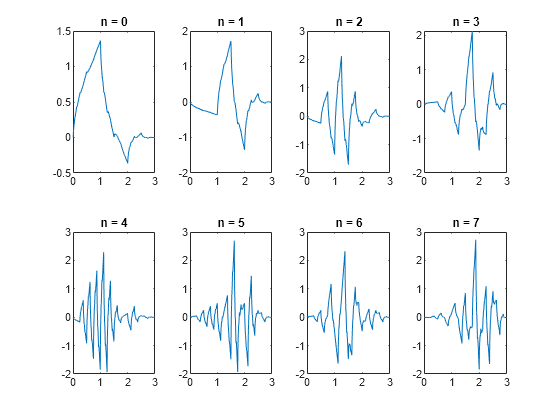wpfun
Wavelet packet functions
Description
wpfun is a wavelet packet analysis
function.
Examples
Input Arguments
Output Arguments
More About
References
[1] Coifman, R.R., and M.V. Wickerhauser. “Entropy-Based Algorithms for Best Basis Selection.” IEEE Transactions on Information Theory 38, no. 2 (March 1992): 713–18. https://doi.org/10.1109/18.119732.
[2] Jaffard, Stéphane, Yves Meyer, and Robert D. Ryan. Wavelets: Tools for Science & Technology. Philadelphia: Society for Industrial and Applied Mathematics, 2001.
[3] Wickerhauser, M.V. "INRIA lectures on wavelet packet algorithms." Proceedings ondelettes et paquets d'ondes, 17–21 June 1991, Rocquencourt, France, pp. 31–99.
[4] Wickerhauser, Mladen Victor. Adapted Wavelet Analysis from Theory to Software. Wellesley, MA: A.K. Peters, 1994.
Version History
Introduced before R2006a
